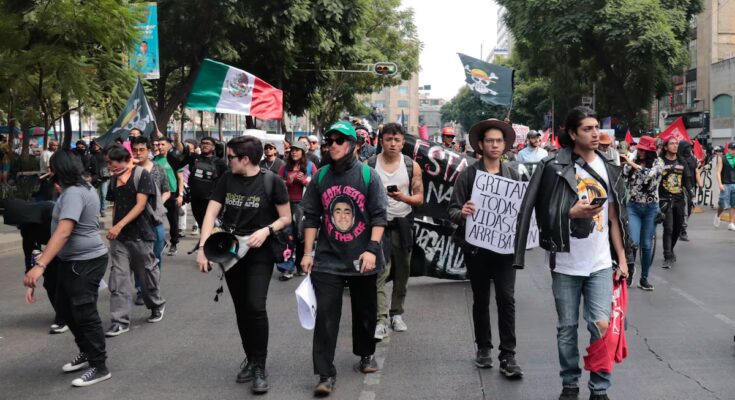The march called this Saturday under the name of Generation Z Mexico has gone from being a movement dispersed on social networks to capturing the attention of the political world in just a few weeks. The call, which mixes messages generated with artificial intelligence, flags anime One pieceanti-government slogans and outrage over the assassination of the mayor of Uruapan, Carlos Manzo, presents itself as a youth protest on a national scale. President Claudia Sheinbaum, supported by Infodemia, claims that behind the march there is an international disinformation network and an investment of close to 90 million pesos, which has the support, according to the president, of the entrepreneur Ricardo Salinas Pliego.
The phenomenon is inspired by the recent mobilizations of young people in countries such as Nepal or Morocco, where dissidents – born between the mid-1990s and 2010 – have organized massive protests. In Mexico, the official account of the movement
The narrative they spread is in line with the constant clash between Salinas Pliego and the government. This Thursday, after the court ruling that forces the entrepreneur to pay a tax debt of 50,000 million pesos, the Generation Z account published a cartoon in which Sheinbaum is portrayed choking and aiming a person with a weapon labeled SAT. Salinas shared the image: “The governments in power are violent, repressive, corrupt and thieving.”
Much of the march’s viral momentum comes from content creators and opinion makers with great attention on social networks. Arturo Herrera, Temach—who insists not to talk about politics even though he claims that “many people will go”—, the rapper Bitrio Smoke who composed a song, Mr. Cívico and Chumel Torres spread messages in favor of the protest. Opposition-related portals, such as The right diary or Mexico on the right, and political figures like Senator Lilly Téllez.
Since the publication of the Infodemia investigation, which rejected the protest, the reports try to highlight the spontaneity of the movement: “No one paid us, no one armed us. We are young people who have the courage to raise our voices out of conviction, out of love for our land”. At the same time, they distance themselves from other requests by asking not to carry Palestinian flags, political parties and not to damage businesses or monuments. These phrases are accompanied by musical references such as Give me the powerr, of Molotov, who was a symbol of the left before Morena came to power.
Beyond the accusations that the phenomenon is not authentic, on TikTok, the platform most used by under 25s, the videos under the march labels are contradictory. Many created with artificial intelligence encourage participation, while others are created by teenagers who warn of the alleged political manipulation behind the call. Among the favorable videos, those not created by artificial intelligence stand out, admitting that they are not interested in those who promoted the march: “I don’t care if it was called by the PAN or the PRI, the important thing is to march against this government”, writes a user.
The appeal is explicitly aimed at young people between 15 and 20 years old, who have not experienced the recent student protests such as #YoSoy132 or the mobilizations of the 43 normalistas of Ayotzinapa. “We want the new young people to know how their country works… The more we know, the less stupid we will be,” says a young man who invites them to march. Other creators share advice for first-time protest attendees: submit your location in real time, set meeting points, bring ID, sunscreen, and a basic first aid kit.
The death of Carlos Manzo, mayor of Uruapan, who was assassinated on November 1, was one of the reasons for the protest. Students in Morelia and Uruapan marched last week demanding justice for the case and since then Generation Z has used his figure as a banner in their publications. Former president Vicente Fox confirmed that he will participate in the march “in homage to a great man”. In his appeal he calls for a “peaceful and non-violent” march. From Uruapan, however, his family has distanced itself. Grecia Quiroz, wife of the murdered mayor and current mayor, said she will not participate and that she does not know who is really leading the protest: “We will not lead this march, I have decided not to participate.”
The discourse shared by many young people revolves around security, impunity, corruption and lack of opportunities. But the movement’s official list of petitions gives priority to demands of a political or anti-government nature, which do not appear in the most viral videos, such as the immediate revocation of the president’s mandate, the direct election of the replacement without partisan intervention, the reform of the judicial system, transparency and demilitarization. And safety only comes at the end.
The march of Generation Z arrives this Saturday amidst cross accusations from the promoters of the demonstration and the party in power, with uncertainty about the real call of the movement and the president’s decision to protect the National Palace with metal fences in the face of the first major mobilization against her after little more than a year in office.



